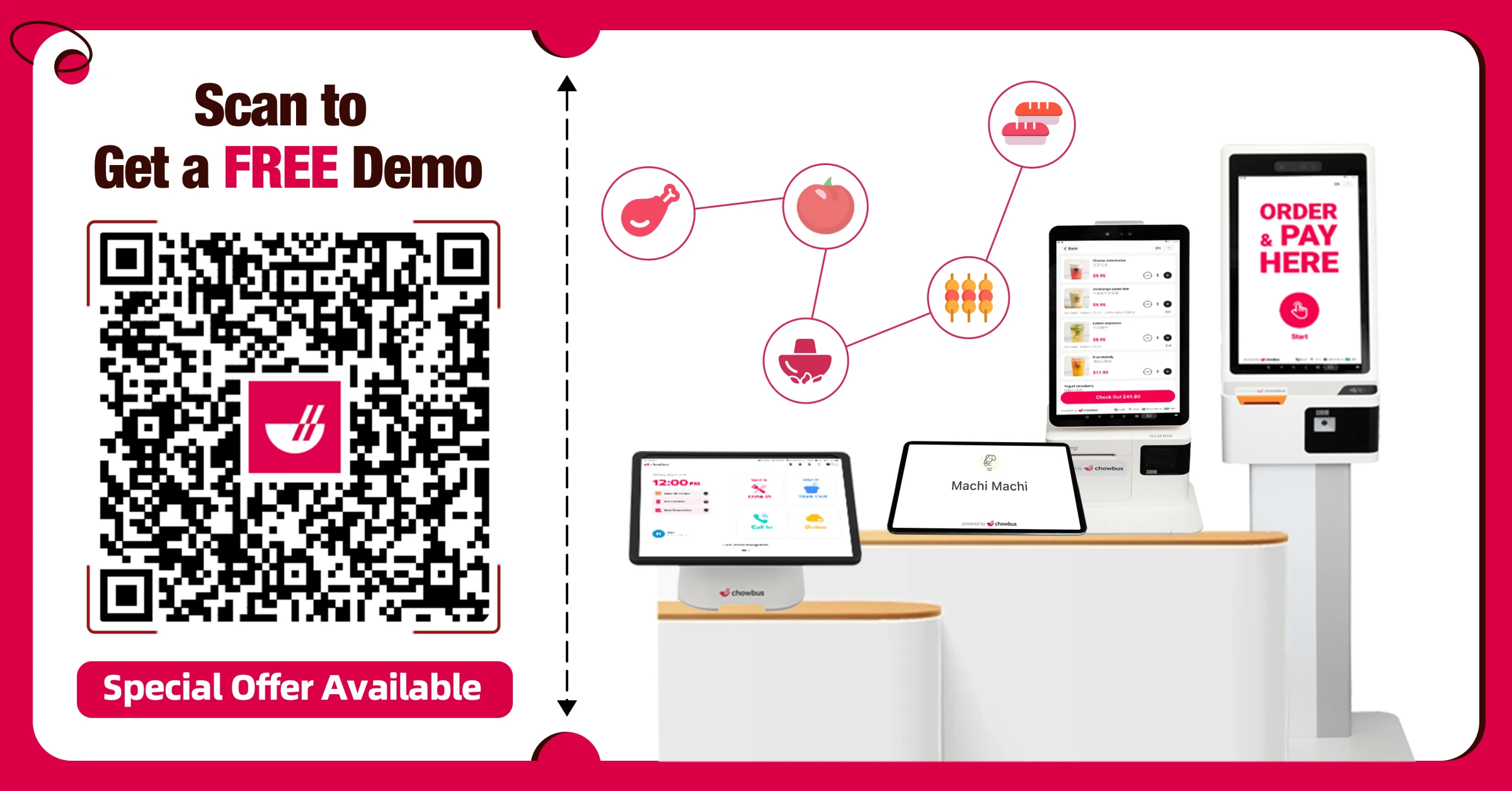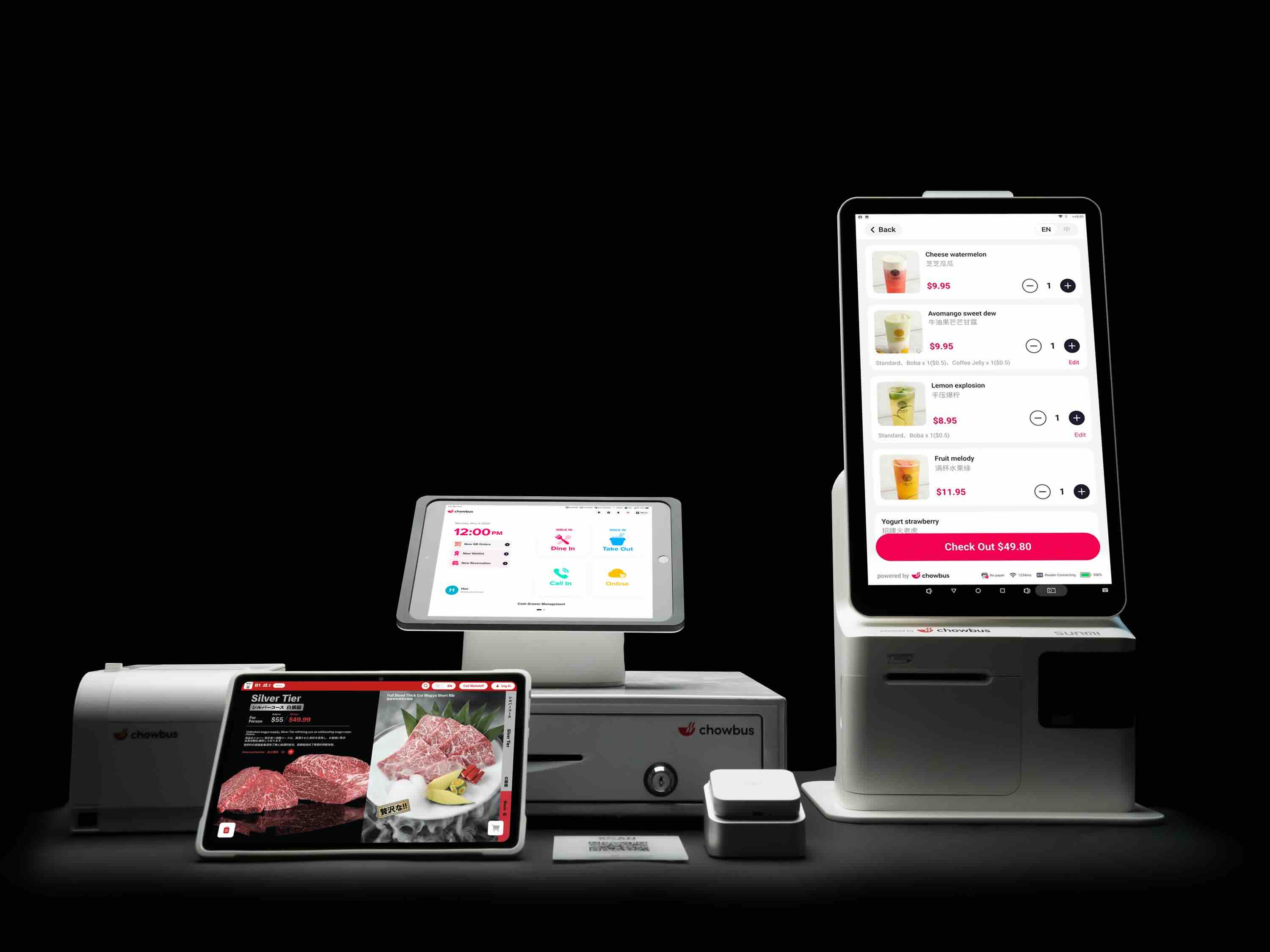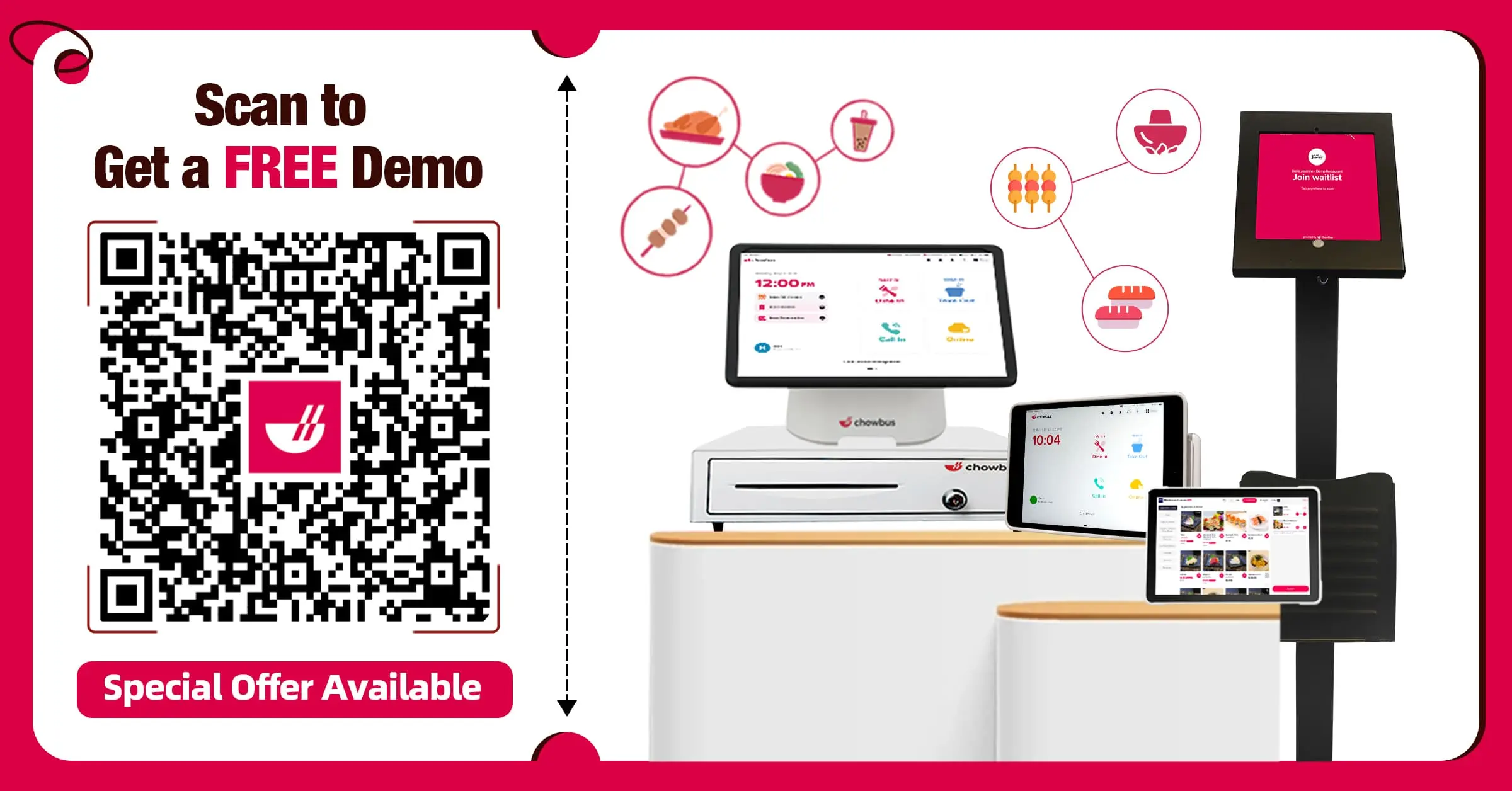What is a Static Menu? Key Differences & Modern Options

Are you confident your menu is perfectly tuned to maximize your restaurant’s potential? With its reliable and consistent offerings, a static menu might be your go-to strategy. But have you considered the dynamic capabilities and competitive edge that digital menu solutions could offer your establishment?
In this blog, we’ll explore transitioning from traditional to digital menus and how embracing technology could significantly enhance your operation’s efficiency and customer satisfaction. Are you ready to evaluate if your current menu setup truly serves your business’s best interests?
Let’s dive into learning what is a static menu.

What is a Static Menu?
A static menu offers a fixed selection of dishes that remain unchanged over a considerable period. This type of menu is usually printed and prominently displayed within the restaurant, ensuring that regular customers and newcomers know exactly what to expect. It suits establishments known for signature dishes or those offering specialized cuisine where consistency in menu items is crucial to the dining experience.
Static menus simplify your restaurant operations, from streamlined kitchen preparation to consistent pricing. They also aid in maintaining control over food costs and reducing waste, as your kitchen staff prepares the same well-honed dishes repeatedly.
For restaurants that have built their reputation on time-honored recipes or where customer favorites demand regular availability, a static menu is often the preferred choice. This approach can solidify your brand’s identity and ensure that patrons return for the dishes they love.
Static Menu Examples
Static menus anchor your restaurant’s identity through a consistent food offering, which helps establish brand reliability and customer loyalty. Here are a few scenarios where static menus are effectively used:
Fine Dining Restaurants: These establishments often rely on static menus to maintain a high level of consistency and quality. For example, a French restaurant might feature a classic lineup of coq au vin, bouillabaisse, and crème brûlée, allowing the chef to perfect each dish and provide a consistent culinary experience that patrons come to expect.
Fast Casual: A burger joint might offer a simple, unchanging menu of signature burgers, fries, and shakes. This allows for quick decision-making by customers and efficient preparation processes, reducing wait times and streamlining operations.
Theme Restaurants: Establishments with a specific theme, such as a 1950s American diner, often use static menus to reinforce the theme with classic dishes like meatloaf, mashed potatoes, and apple pie, enhancing the thematic dining experience.
Family-Style Restaurants: Known for creating a homey atmosphere, these restaurants often use static menus to offer comforting and familiar dishes that encourage repeat business. Dishes like roast chicken, lasagna, and seasonal pies remain constant, making it easy for families to have a go-to place for reliable, satisfying meals.
Each of these examples showcases the utility of a static menu in different dining settings, emphasizing quality, efficiency, and thematic consistency, which are crucial for customer satisfaction and operational success.
Static Menu vs. Other Types of Menu
When deciding on the menu type for your restaurant, it’s essential to understand how a static menu stacks up against other popular formats. Here’s a clear comparison to help you evaluate which menu type aligns best with your business goals.
1. A La Carte vs Static Menu
An a la carte menu offers items priced separately, providing flexibility for your customers to choose based on their preferences. This contrasts with a static menu where the selections are consistent and unchanged. While a static menu simplifies inventory control and meal preparation, an a la carte menu can cater to diverse customer tastes and potentially increase spending per diner as they customize their meal.
2. Cycle Menu vs Static Menu
A cycle menu rotates through different items over a specific period—weekly, monthly, or seasonally. This rotation can keep the dining experience fresh and exciting, a stark contrast to the predictability of a static menu. Opting for a cycle menu can also allow you to adjust offerings based on the seasonal availability of ingredients, which might be more challenging with a static menu.
3. Du Jour Menu vs Static Menu
"Du jour" items are those offered only on specific days, featuring specials based on what’s fresh or available that day. This setup is ideal for showcasing culinary creativity and reducing waste, while a static menu offers stability and consistency, which might be preferred by regular customers who have favorite dishes.
4. Prix Fixe Menu vs Static Menu
A prix fixe menu offers a complete meal at a set price with a few options available, making it ideal for special occasions or streamlined service. In contrast, a static menu provides a broader range of options at varying prices, which may cater better to everyday dining.
5. Table d’Hote Menu vs Static Menu
Similar to prix fixe, a table d’hote menu offers a selection of courses at a set price but usually includes more options within each course. This can offer a middle ground between the variety of a static menu and the curated experience of a prix fixe menu, allowing for efficient service and potentially higher per-table revenue without the extensive variety of a static menu.
Each of these menu types has its benefits and challenges, and your choice will depend on your specific operational goals, customer base, and the dining experience you wish to offer. Whether you aim to provide consistency, variety, or a unique dining experience, understanding these differences is key to tailoring your menu to your restaurant's strengths and market demands.

Advantages of Digital Menu Over Static Menu
Switching to a digital menu brings several key benefits that are hard to ignore if you aim to streamline your operations and enhance the dining experience. Let’s explore why many restaurants are making the switch and how it could benefit your business.
1. Instant Updates and Flexibility
Digital menus shine when it comes to flexibility. You can update them in real-time to remove sold-out items, add daily specials, or adjust prices to match supply costs. This keeps your menu fresh and accurate, reflecting changes instantly without the need to reprint or manually alter traditional menus.
2. Cost Savings
Think about the ongoing expense of printing new menus every time you make a change. It adds up quickly, right? Digital menus eliminate this cost. Once set up, you can make endless changes without additional printing expenses, reducing your operational costs over time.
3. Enhanced Customer Experience
Digital menus can enhance the dining experience in several ways. They often feature high-quality images and detailed descriptions, which help customers make informed decisions. Some systems even allow you to include nutritional information or highlight popular items, which can improve customer satisfaction and potentially increase sales.
4. Eco-Friendly Option
If sustainability is a goal for your restaurant, digital menus are an excellent step forward. They reduce paper waste and the need for physical materials associated with traditional menus, aligning your business with eco-friendly practices that appeal to environmentally conscious consumers.
5. Data Insights
By integrating digital menus with your POS system, you gain access to valuable data about what’s selling well and what isn’t. This can inform your purchasing decisions and help tailor your offerings to meet customer preferences, potentially increasing your profitability.
6. Adaptability to Trends
With a digital menu, you can quickly adapt to emerging dining trends or seasonal changes. This responsiveness not only keeps your menu exciting but also demonstrates to your customers that your restaurant stays current and responsive to market dynamics.
By incorporating digital menus, you can enhance operational efficiency, reduce costs, and provide a better dining experience. Isn’t it time to consider whether a digital menu could be the right choice for your restaurant?
How Digital Menus for Restaurants Are Replacing Static Menus
As the shift towards digital menus accelerates, restaurants are discovering how these tools can directly replace static menus by meeting modern consumer expectations, improving operational efficiency, and enhancing data-driven decision-making.
Consumer Expectations
Today's diners seek tech-savvy dining experiences. The widespread use of smartphones and tablets has integrated these devices into the dining landscape, making digital menus a natural fit for enhancing customer interaction.
Operational Efficiency
Digital menus streamline restaurant operations by managing seating capacity and reducing wait times, which in turn speeds up table turnover. This efficiency helps you serve more customers with greater satisfaction.
Data and Insights
With digital menus, you can track which items are hits with your guests and which are misses. This immediate feedback allows for quick menu adjustments, ensuring your offerings always match customer preferences and maximize profitability.
Digital Menu Solutions for Modern Restaurants
Choosing the right method to showcase your menu can significantly enhance your customer's dining experience and streamline your operations. Here’s a look at some effective digital solutions:
1. QR Code Menus
Embrace the convenience of QR code ordering with a QR code-based menu. By simply scanning a QR code with their smartphone, your customers can view your entire menu. This method not only speeds up the ordering process but also minimizes contact, making it a safe option for both your staff and patrons.
2. Self-Service Kiosks
Implement self-ordering kiosks to allow customers the freedom to place their orders directly through kiosk machines. This technology helps reduce wait times and human error, ensuring orders are precise and customers are served quickly. It’s an efficient way to handle high traffic while maintaining high service standards.
3. Tablet Ordering
Tablet POS systems enable tableside ordering, which can significantly enhance the customer experience. Your staff can take orders directly at the table via tablets, providing an interactive menu for customers to browse. This method improves order accuracy and speeds up the service process.
4. Online Menu
Set up an Online Food Ordering System to extend your service beyond the physical location of your restaurant. With online ordering, customers can easily place orders from the comfort of their home or office. An online ordering system for restaurants also allows you to reach a broader audience, increasing your restaurant's visibility and potential revenue.
Each of these digital solutions offers a unique set of benefits that can help modernize your operations, improve efficiency, and enhance the dining experience. By implementing these technologies, you're not only keeping up with industry trends but also providing a flexible and customer-friendly service model.
Conclusion
Whether you're maintaining a static menu or transitioning to digital, the optimal strategy hinges on your specific business needs and customer preferences. Digital menus offer substantial benefits, from immediate updates to cost efficiencies, enhancing customer interaction and supporting eco-friendly operations.
Ready to explore how a cloud-based POS can revolutionize your restaurant?
Contact us for a FREE DEMO and learn more about the best POS system for restaurants. Discover how seamless menu management can elevate your operation's efficiency and customer satisfaction. Make the switch to digital today and transform your dining experience!

Frequently Asked Questions About What is a Static Menu
Here are the answers to some common questions you might have about what it means to have a static menu at your establishment. Find insights into how this format compares to other types of menus and discover the potential benefits for your restaurant.
What Does it Mean When Someone Says Their Menu is Static?
When someone says their menu is static, it means the food and drink options do not change often. The menu offers the same selections over a long period, providing consistency for customers.
What is the Difference Between a Static Menu and a Cycle Menu?
A static menu offers the same set of dishes every day, making it consistent and predictable for customers. In contrast, a cycle menu rotates through different dishes over a specific period, such as weekly or monthly, providing variety and allowing for seasonal adjustments. This rotation can keep the menu exciting and engaging for repeat customers.
What is the Difference Between Static and Dynamic Menu?
A static menu remains the same over time, typically featuring a fixed set of offerings that do not change. On the other hand, a dynamic menu frequently changes, adapting to factors like seasonal availability, trends, or customer preferences. This flexibility allows businesses to introduce new items regularly and retire less popular ones, keeping the menu fresh and exciting for customers.
What are the Advantages of a Static Menu?
A static menu offers several advantages: it simplifies inventory management by using a consistent set of ingredients, which can lead to bulk purchasing and reduced costs. It also allows for perfecting dishes over time, enhancing food quality and customer satisfaction. Furthermore, a static menu makes training staff easier and improves service speed, as employees become familiar with a fixed list of offerings. This consistency often builds a reliable brand identity, attracting customers who appreciate knowing what to expect.
What is a Menu Without Prices Called?
A menu without prices is called a "blind menu." This type of menu presents the dishes available without listing their costs, often used in settings where the dining experience is prioritized over cost considerations.
For more insights and updates on enhancing your restaurant operations, check out our blog section regularly.

Recommended Articles: